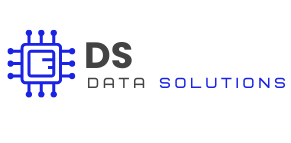Introduction
In the ever-evolving world of digital marketing, staying ahead of the competition and delivering content that resonates with your audience is crucial. Content marketers, digital marketing agencies, and brand managers are always on the lookout for fresh insights that can drive their strategies. One powerful tool that can help achieve this is web scraping. By automating the process of gathering data from the web, web scraping allows marketers to identify trending topics, analyse competitor content, and find potential influencer collaborations—all of which can significantly enhance a content marketing strategy. In this article, we’ll explore how to effectively use web scraping to boost your content marketing efforts and stay ahead in a competitive landscape.
Identifying Trending Topics
One of the most effective ways to ensure your content resonates with your audience is by covering topics that are currently trending. However, manually scouring the web for these topics can be time-consuming and inefficient. Web scraping can automate this process, helping you stay on top of the latest trends in your industry.
How to Do It:
- Monitor Social Media: Use web scraping tools to collect data from social media platforms like Twitter, Reddit, and LinkedIn to identify trending hashtags, discussions, and topics. This data can help you understand what your target audience is currently interested in and tailor your content accordingly.
- Analyse Google Trends: Scrape data from Google Trends to see what keywords and topics are gaining popularity over time. This can help you align your content with what people are actively searching for.
Example: A content marketer for a tech company could use web scraping to monitor trending topics in technology forums and social media groups, enabling them to create timely blog posts or videos that address current industry concerns.
Analysing Competitor Content
Understanding what your competitors are doing can provide valuable insights into what works and what doesn’t in your industry. Web scraping allows you to gather and analyse competitor content at scale, helping you identify gaps, opportunities, and strategies that can be leveraged in your own content marketing.
How to Do It:
- Collect Blog Posts: Use web scraping to gather data on your competitors’ blog posts, including topics, publication frequency, word count, and engagement metrics (such as comments and shares). Analysing this data can help you identify content gaps or areas where your competitors are performing well.
- Analyse Content Performance: Scrape data from social media platforms to see how your competitors’ content is performing in terms of likes, shares, and comments. This can give you insights into what type of content resonates with your shared audience.
Example: A digital marketing agency could scrape data from competitors’ blogs to analyse the most successful posts, then use that information to create similar or improved content for their own clients.
Finding Influencer Collaborations
Influencer marketing is a powerful strategy for expanding your content’s reach and building brand authority. Web scraping can help you identify potential influencers who are relevant to your niche and who have a significant following, making it easier to build partnerships that can amplify your content marketing efforts.
How to Do It:
- Identify Relevant Influencers: Use web scraping to collect data from social media platforms, blogs, and YouTube channels to find influencers who are active in your industry. Look for metrics such as follower count, engagement rate, and the types of content they produce.
- Monitor Influencer Activity: Scrape data to monitor the content that influencers are sharing, including topics they are discussing, brands they are collaborating with, and their audience’s response. This information can help you approach influencers with tailored collaboration proposals.
Example: A brand manager for a beauty product line could use web scraping to identify beauty influencers on Instagram who have high engagement rates and frequently discuss topics related to skincare. This can lead to successful influencer partnerships that drive traffic and sales.
Optimizing Content Distribution
Content distribution is just as important as content creation. Web scraping can help you optimize where and how you share your content by identifying the most effective channels and times for distribution.
How to Do It:
- Analyse Social Media Channels: Scrape data from various social media platforms to see which channels are driving the most traffic and engagement for your competitors or similar brands. This can help you focus your efforts on the platforms that will give you the best return on investment.
- Track Content Sharing: Use web scraping to monitor where and how your content is being shared across the web. This can provide insights into which distribution strategies are working and where adjustments may be needed.
Example: A content marketer could scrape data from multiple social media platforms to determine the best times to post content based on audience activity, ensuring maximum reach and engagement.
Enhancing SEO with Web Scraping
SEO is a critical component of any content marketing strategy, and web scraping can play a significant role in improving your site’s search engine performance. By gathering data on keywords, backlinks, and competitor SEO strategies, you can make informed decisions that boost your content’s visibility.
How to Do It:
- Keyword Research: Scrape data from search engine results pages (SERPs) to identify the keywords that competitors are ranking for. This can help you discover new keywords to target in your own content.
- Backlink Analysis: Use web scraping to gather data on the backlinks pointing to your competitors’ websites. Identifying these sources can help you pursue similar backlink opportunities to improve your own site’s authority.
Example: A brand manager could use web scraping to analyse the keywords and backlinks of top-ranking competitors, allowing them to optimize their content with high-impact keywords and secure valuable backlinks.
The Benefits of Using Web Scraping for Content Marketing
By integrating web scraping into your content marketing strategy, you can gain a competitive edge through:
- Data-Driven Decisions: Access to real-time, accurate data allows you to make informed decisions about your content, ensuring that it resonates with your audience and aligns with current trends.
- Efficiency: Automate the data collection process, saving time and resources that can be redirected toward content creation and strategy development.
- Improved ROI: By identifying trending topics, analysing competitor content, and finding influencer collaborations, you can create more effective content that drives engagement and generates better returns.
Conclusion
Web scraping is a powerful tool that can significantly enhance your content marketing strategy by providing the data you need to identify trending topics, analyse competitor content, find influencer collaborations, optimize content distribution, and improve your SEO efforts. For content marketers, digital marketing agencies, and brand managers, leveraging web scraping can lead to more effective content strategies that resonate with your audience, drive engagement, and deliver measurable results.
By incorporating web scraping into your content marketing toolkit, you can stay ahead of the competition and ensure that your content strategy is always aligned with the latest trends and insights.
Ready to Start Your Web Scraping Journey?
Ready to enhance your content marketing strategy with web scraping? Explore our other articles on advanced web scraping techniques, or contact us to learn how our web scraping services can help you achieve your marketing goals.


